Collaborations

2025.03.13
Teaming Up with Top Creatives to Innovate Craftsmanship! (Part 4)
With this fourth and final installment of the collaborative project between Edogawa Collection partners and creatives from MUJI, the long-awaited Edogawa Collection original items have officially launched. We report on the debut of these new products at the gift show and in stores, along with reactions from attendees and the excitement at the venue!
First Look at the Collaboration Products! Tokyo International Gift Show
The day of the launch was a cold but beautifully sunny day in February.
From February 12 to 14, the Tokyo International Gift Show was held at Tokyo Big Sight, and we bring you a report from the Edogawa Collection booth.
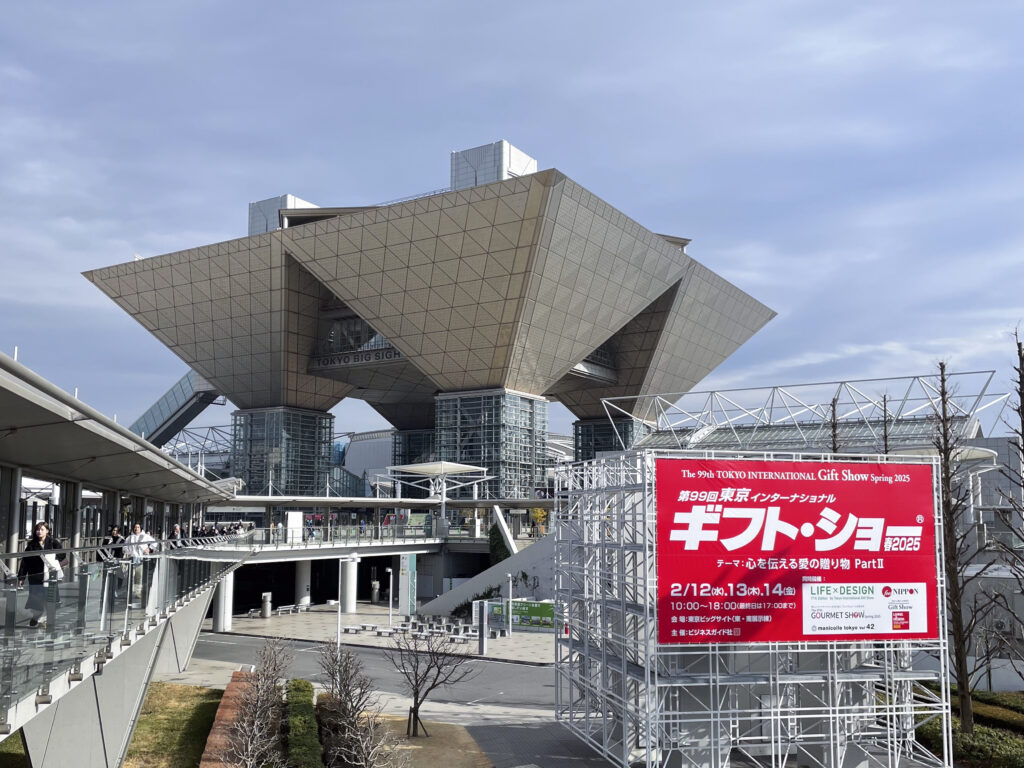
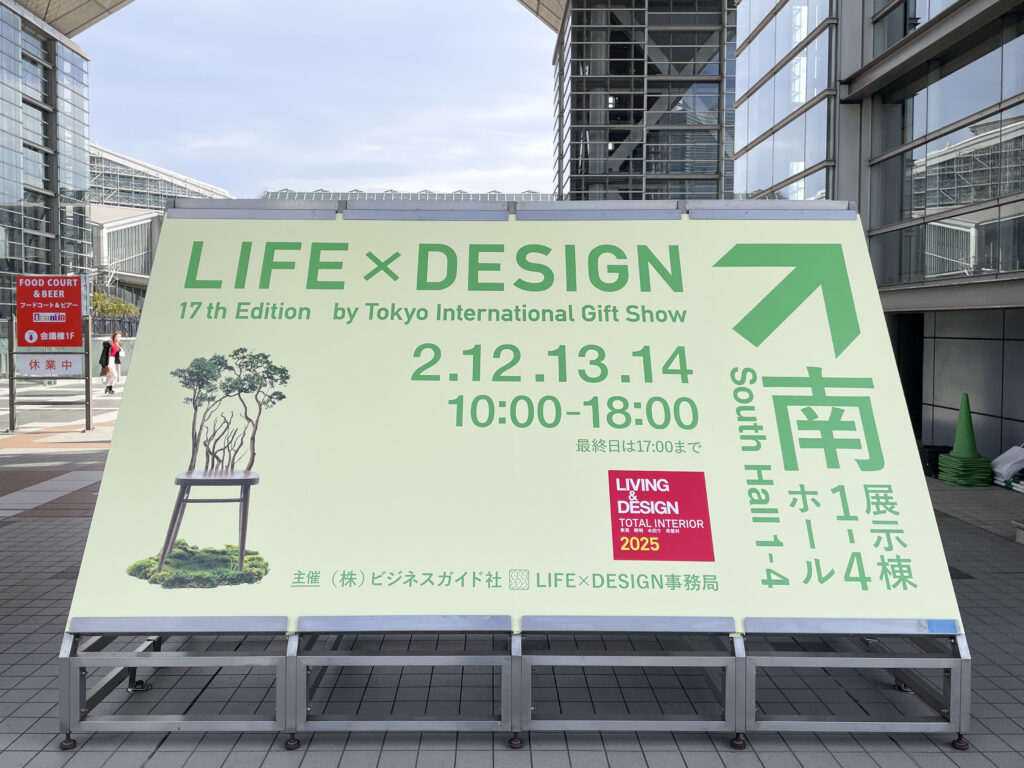
Edogawa Collection exhibited in the LIVING & DESIGN area alongside other interior-focused booths.
Edogawa City’s finest crafts and specialty products were proudly displayed in a signature blue booth. Our partners’ expert craftsmanship drew the eyes of many a passerby, with plenty of visitors pausing to admire the work on display.
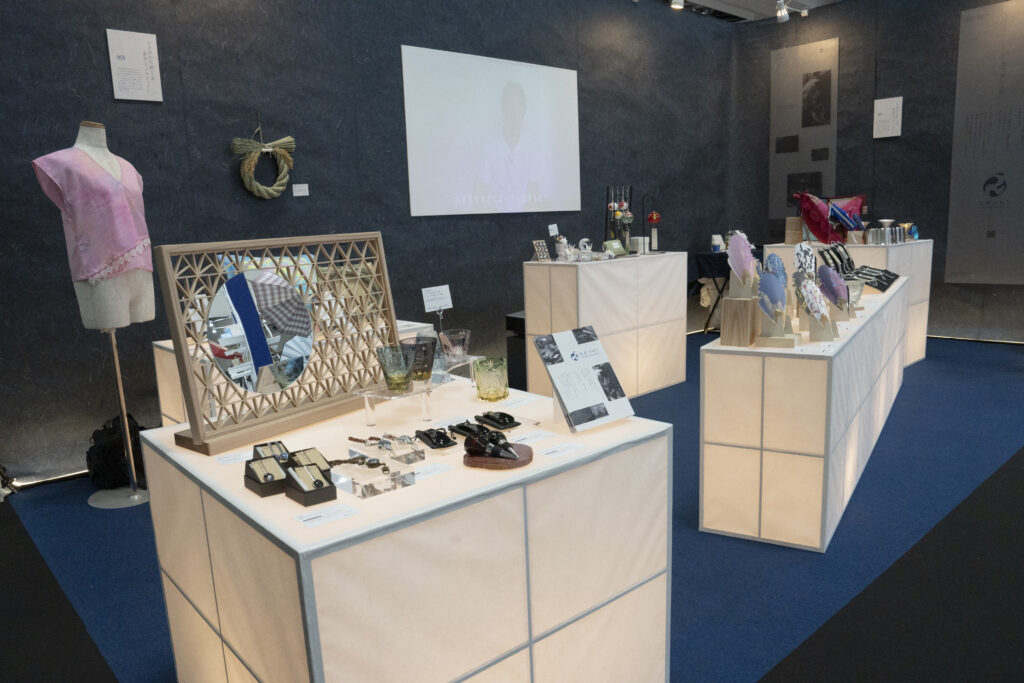
Products from 13 partner companies were on display.
The original Edogawa Collection collaboration items developed over the past three months were also on display for the very first time.
First up, the striking dog bowl by Takahashi Shibori Kogyo. With its beautifully polished finish, this large-and-small bowl set immediately caught the attention of all and every dog lover walking by.
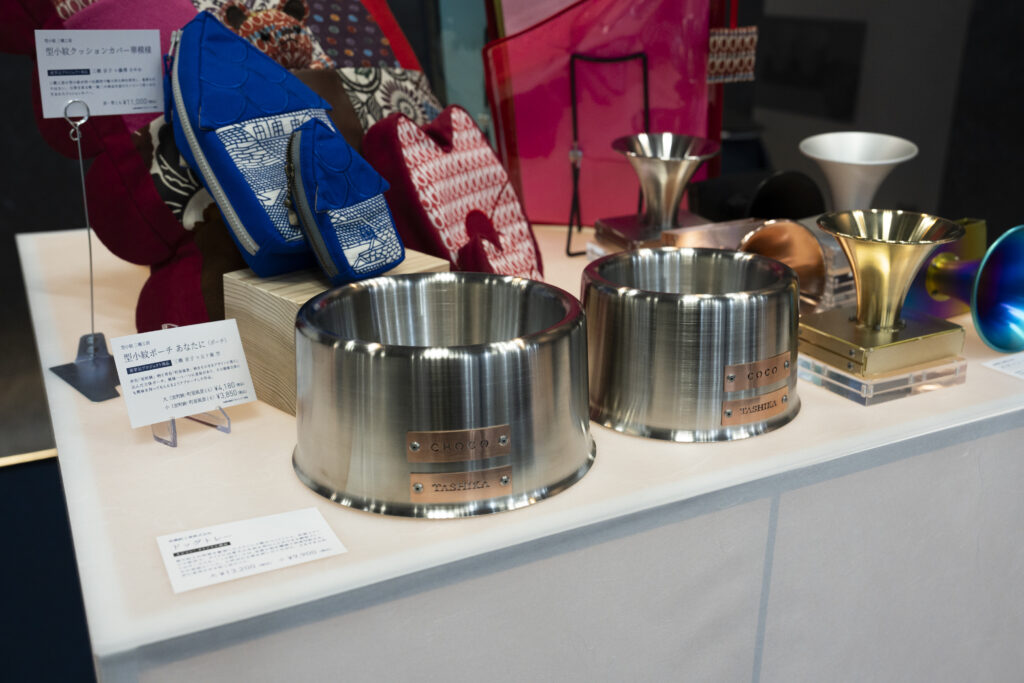
Dog bowls available in two sizes. The original copper nameplate can be engraved with your dog’s name—an elegant finishing touch.
Next we come to the Edo furin wind chimes by Shinohara Furin, featuring a brilliant vermilion hue traditionally associated with warding off evil. Its vivid color was an immediate eye-catcher.
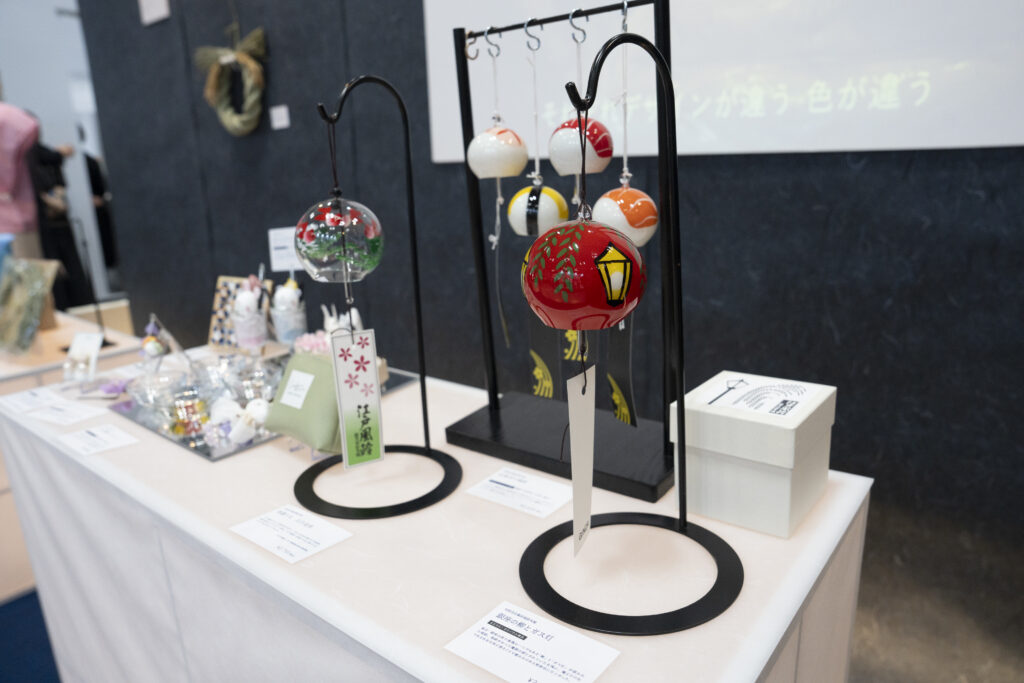
Collaboration piece Ginza no Yanagi to Gasuto, or Willows and Gas Lamps of Ginza (foreground, right). The sushi-patterned wind chimes in the back are part of a separate industry-academia-government project developed with Joshibi University of Art and Design.
In the wind chime’s final design, the gas lamp was painted in black ink, giving the illustration even sharper contrast. The piece was displayed hanging from an original stand by Shinohara Furin, along with its matching outer packaging.
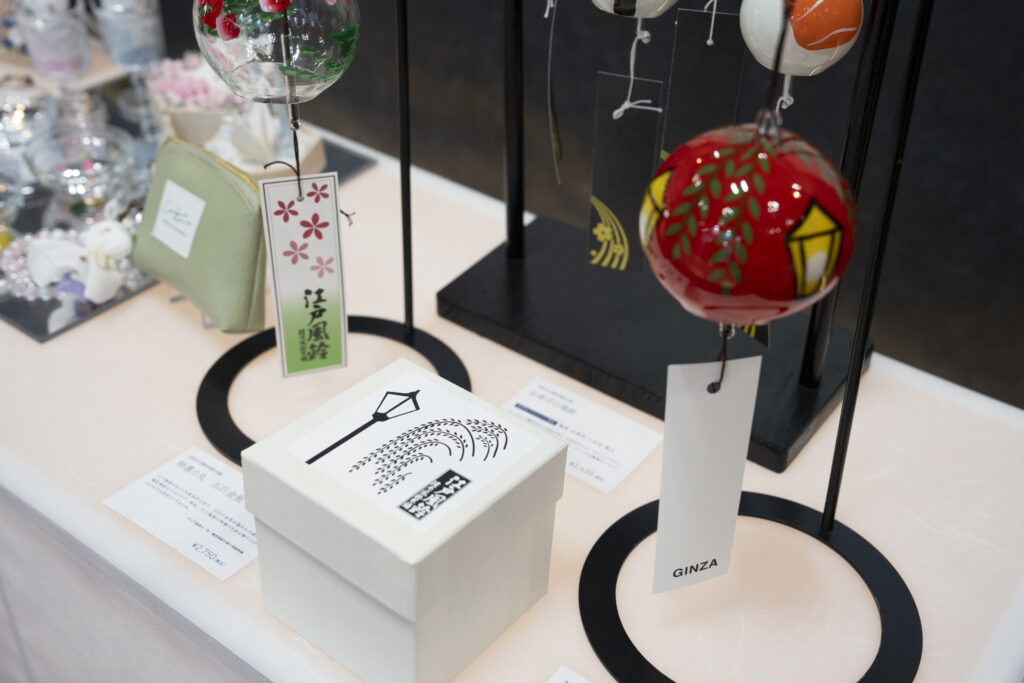
The packaging features a custom illustration that incorporates the wind chime’s design, and the tanzaku paper strip includes the word “GINZA”—a detail that adds a special touch.
Last but by no means least was the shimenawa-making kit by Nawachu.
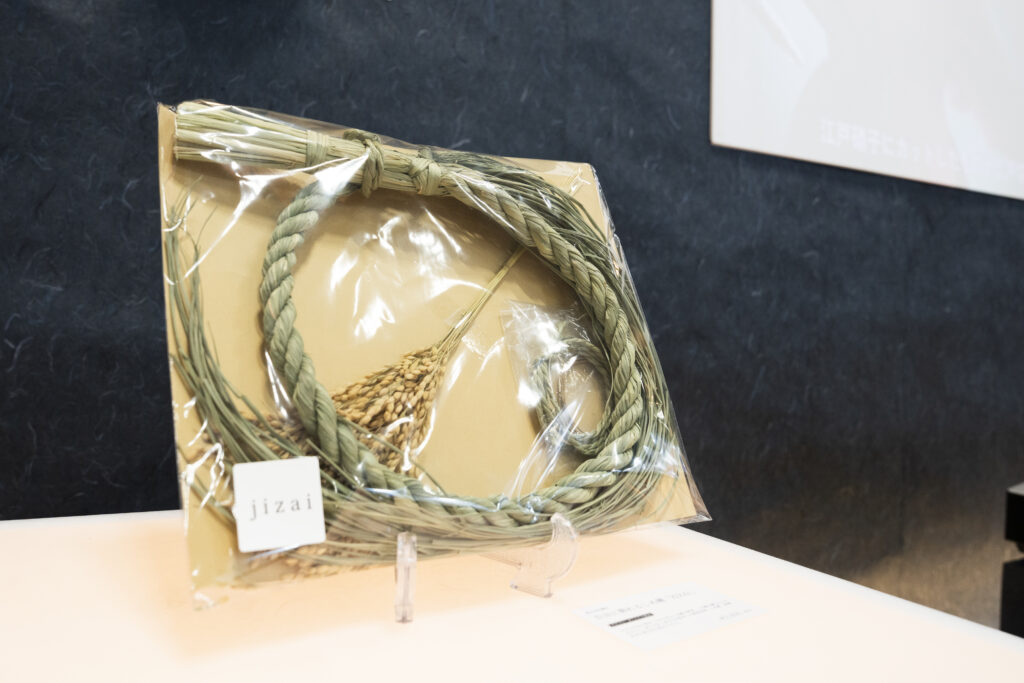
Every detail of the kit—from the materials and quantities to the color of the backing card—was carefully considered, leading to the final product, called jizai.
After much discussion, the product name was finalized as jizai, written in lowercase roman letters. The wrapped package is finished with a sticker featuring the name. Just like existing Nawachu products such as minori, it strikes a perfect balance between elegance and lightness.
The Tokyo International Gift Show, where these collaboration items were unveiled for the first time, concluded on a high note with lively crowds and enthusiastic feedback.
From Gift Show to Ginza Shoppers: A Collaboration Compiled, Tsunagaru Ichi & Edogawa Collection Edition
Next, we turn to the Tsunagaru Ichi & Edogawa Collection Edition, held at MUJI Ginza’s 4th floor event space, Open MUJI. The event took place over three days, from Friday, February 21 to Sunday, February 23, and featured products from 15 partner businesses, including the three participants in the collaborative project.
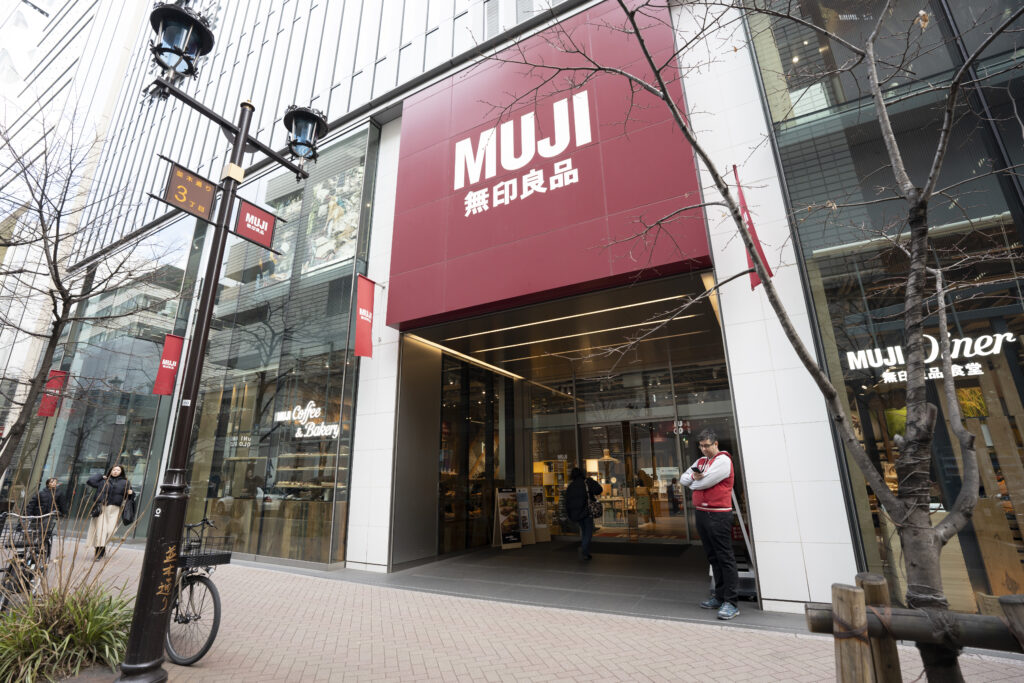
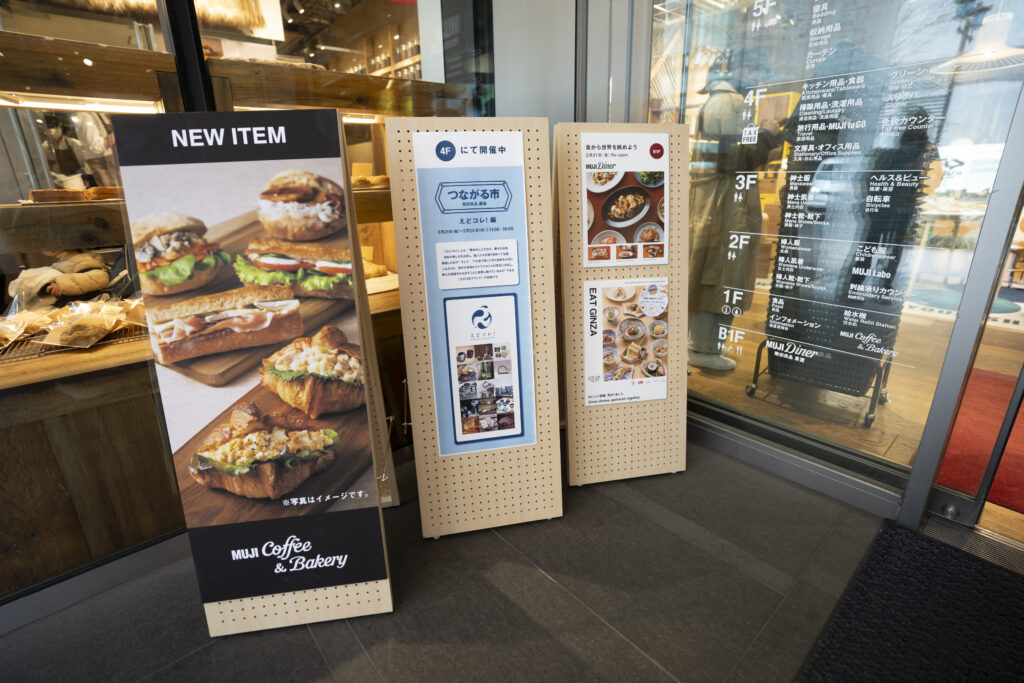
The three-day weekend brought plenty of foot traffic to all floors of MUJI Ginza.
The 4th floor Open MUJI space, located beside the escalators and constantly buzzing with shoppers, was home to a beautiful display of Edogawa Collection’s finest goods.
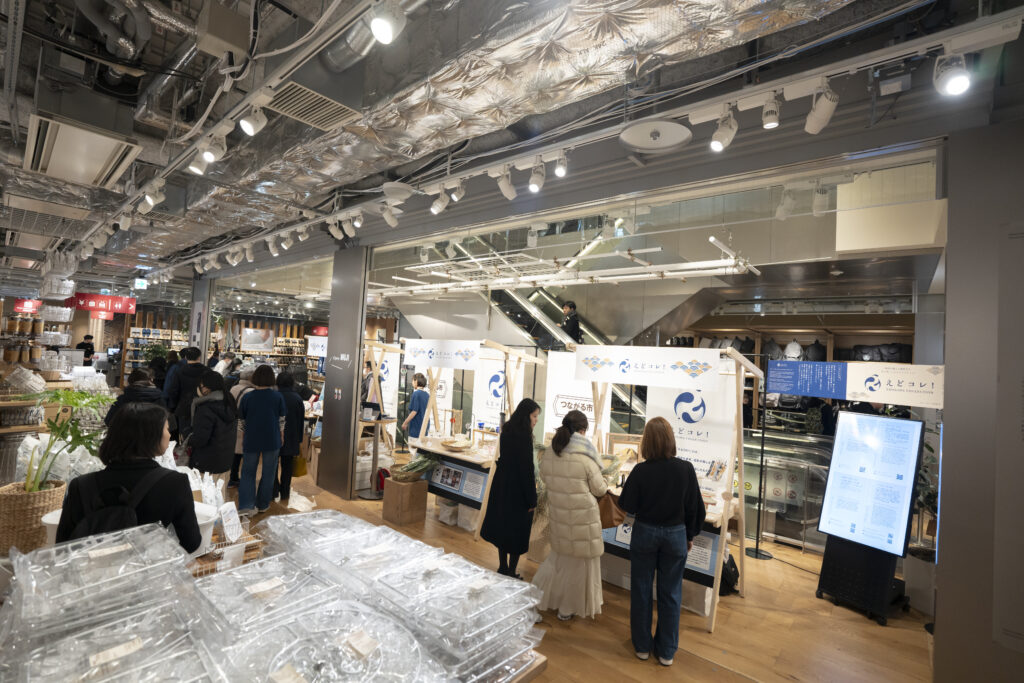
The specially prepared Tsunagaru Ichi space also featured a hands-on Edo kiriko glass workshop by Nakakin Glass. Guests who had pre-booked gathered one after another to enjoy the unique crafting experience.
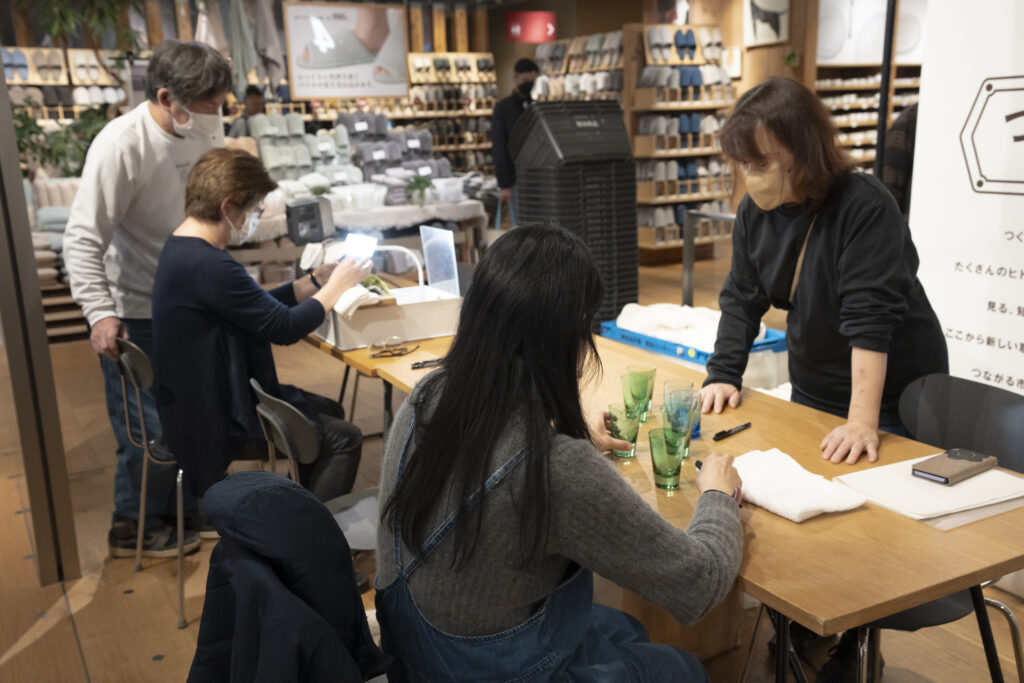
Participants could choose between two types of glass for the workshop: blue or green. The green one, with its sloped sides, was said to be the more difficult to work with.
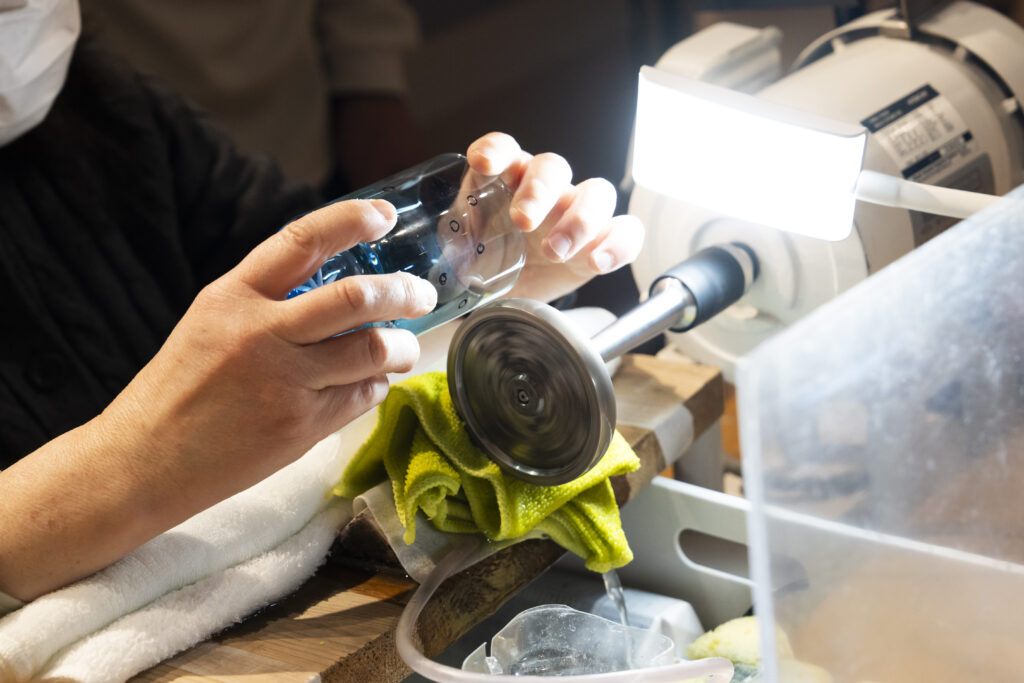
“The angle of your hands changes between the top and bottom—the adjustment in pressure is subtle but tricky,” said one guest. Many participants commented that it was harder than they expected. Curious shoppers, in the midst of their MUJI visits, also stopped by to check out the experience.
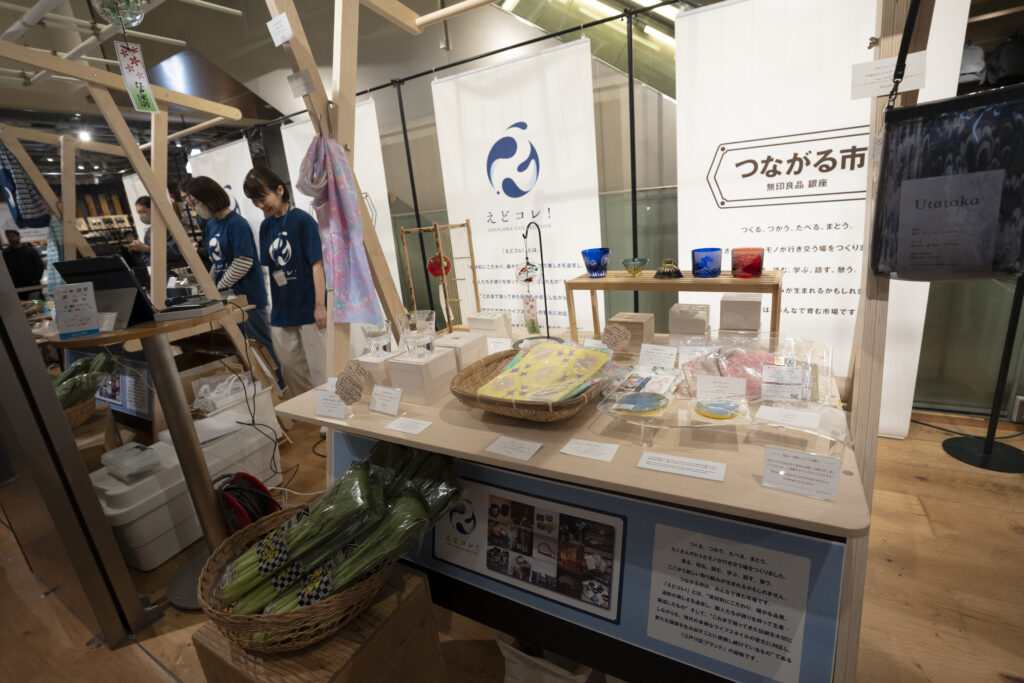
Komatsuna greens from K&K Farm (foreground) were a big hit, and the Edo kiriko glass tumblers by Nakakin Glass (background) proved popular with international visitors.
All three collaboration products caught the attention of many shoppers, with purchase after purchase being made!
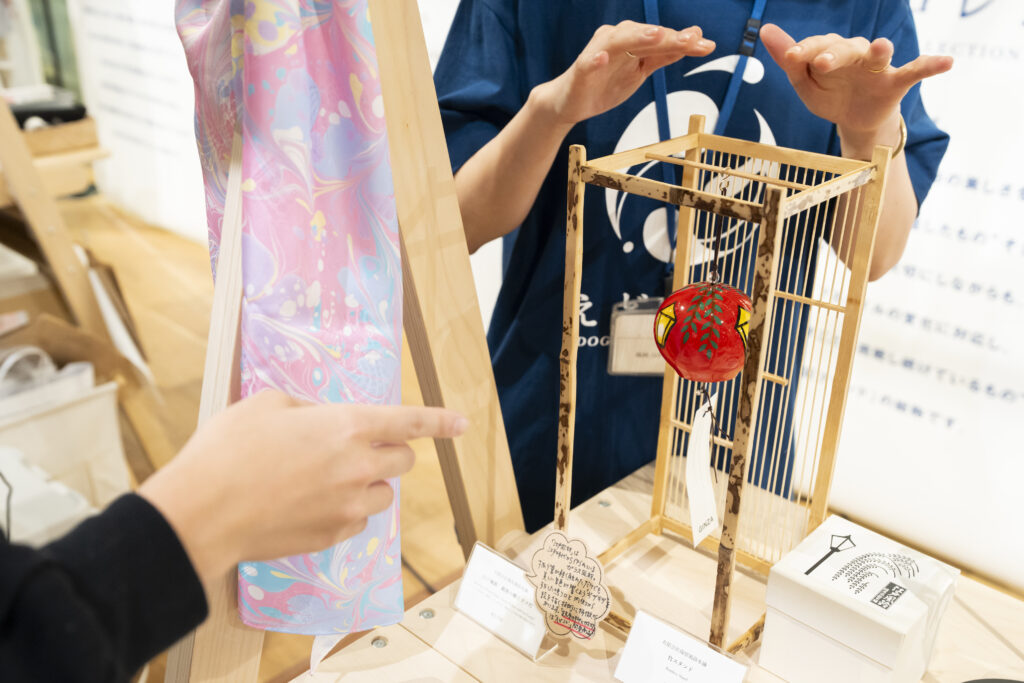
Ginza no Yanagi to Gasuto, or Willows and Gas Lamps of Ginza, suspended from Shinohara Furin’s original stand. One woman who stopped to admire it commented, “The stand has such a unique East-meets-West feel—it’s beautiful.”
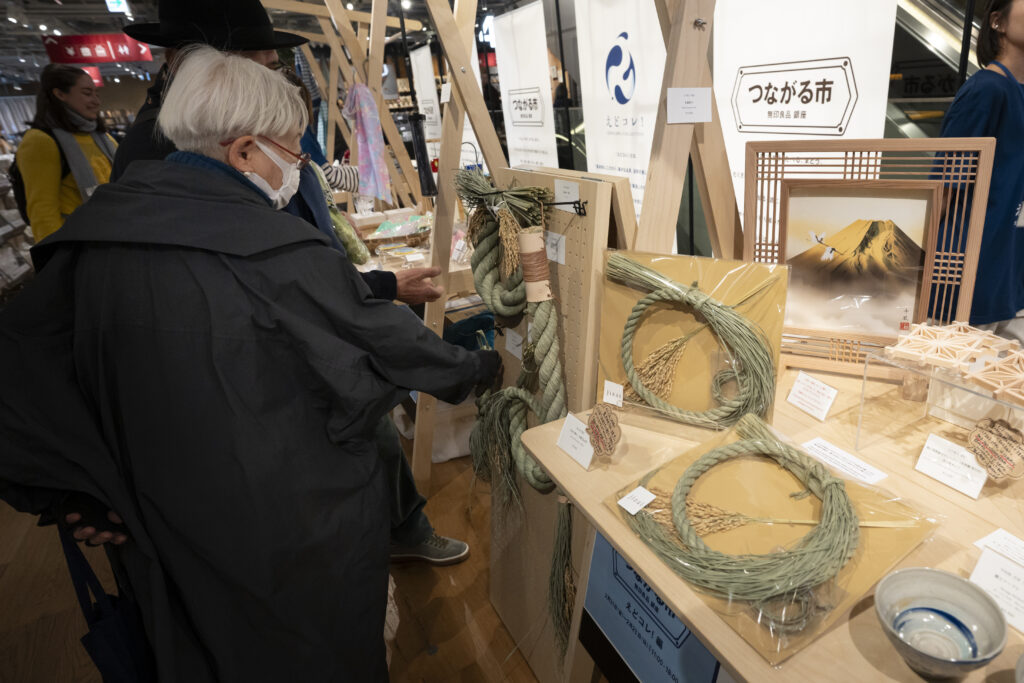
This couple, who described themselves as longtime Nawachu fans, posed for a commemorative photo with the jizai product in hand.
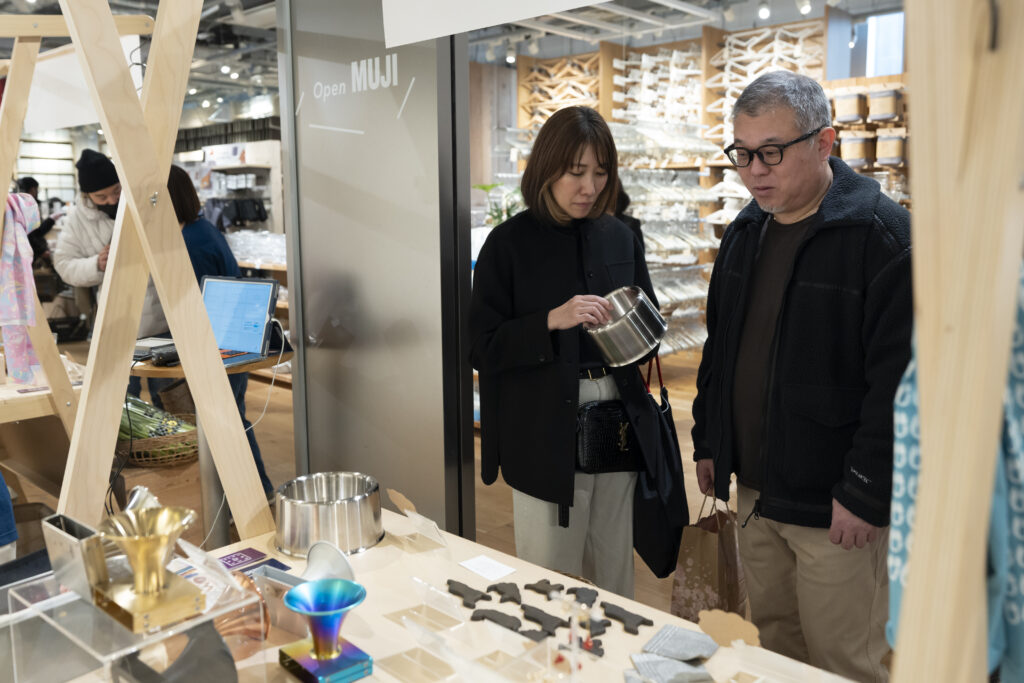
Owners of two Italian Greyhounds, this couple picked up a small-size dog bowl to use as a water dish, saying, “It looks so stylish.”
Alongside the collaboration products, other items like Nawachu’s traditional shimenawa and Takahashi Shibori Kogyo’s speaker-style smartphone stand also drew interest. It was a vibrant three-day event where many eyes were opened to the quality of Edogawa City’s finest craftsmanship.
And standing at the heart of the Tsunagaru Ichi venue was none other than Nakagawa Takumu from MUJI Ginza, who played a central role in developing these collaboration products.
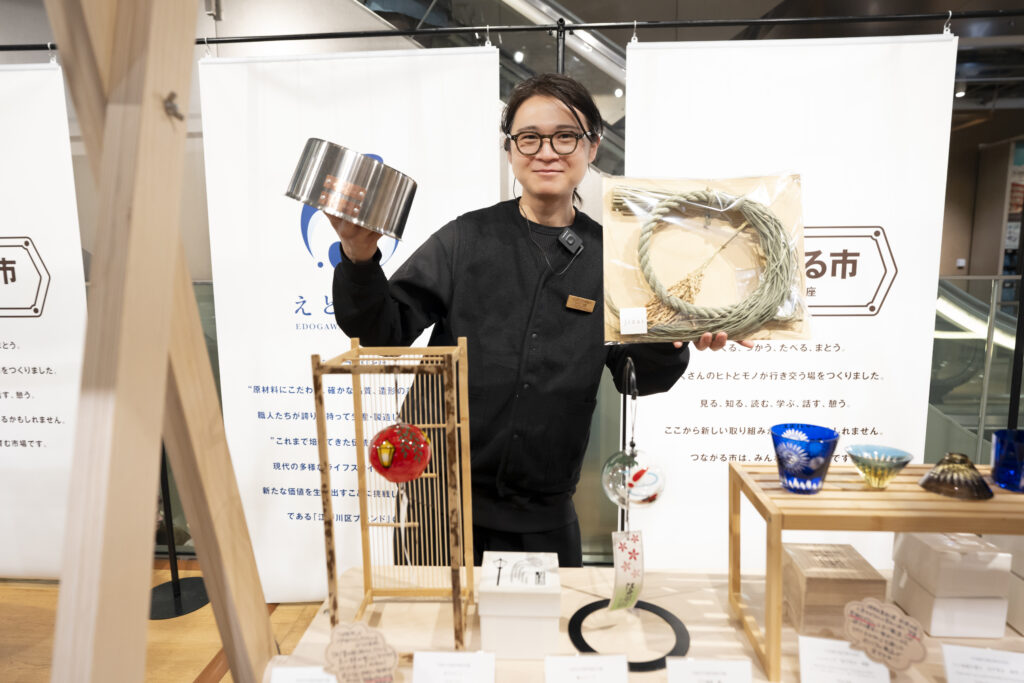
Despite his modest claims not to be much of a talker, Nakagawa’s passion for the project came through loud and clear.
We asked Nakagawa to share his reflections.
“I was genuinely impressed—Edogawa City really did itself proud! Every single partner business was incredibly dedicated to their craft. Visiting their workshops and seeing that passion up close inspired me and drew me deeper into the project.
Seeing the jizai shimenawa kit come together, I was blown away by how striking it looked in real life—far beyond what I’d imagined. In our meetings with Shinohara Furin, I also learned that traditional wind chimes were originally vermilion, and that knowledge helped us create something truly symbolic of Ginza. And the dog bowl, which I directed while thinking like a consumer myself, became this meticulously finished product all thanks to Takahashi Shibori Kogyo. I’m really moved by how well it turned out.
Craftsmanship isn’t just about production—it’s about seeing products through to the final point of sale. With so many international visitors in Ginza, I’m excited to help launch Edogawa City’s homegrown products from MUJI Ginza to the world.”
